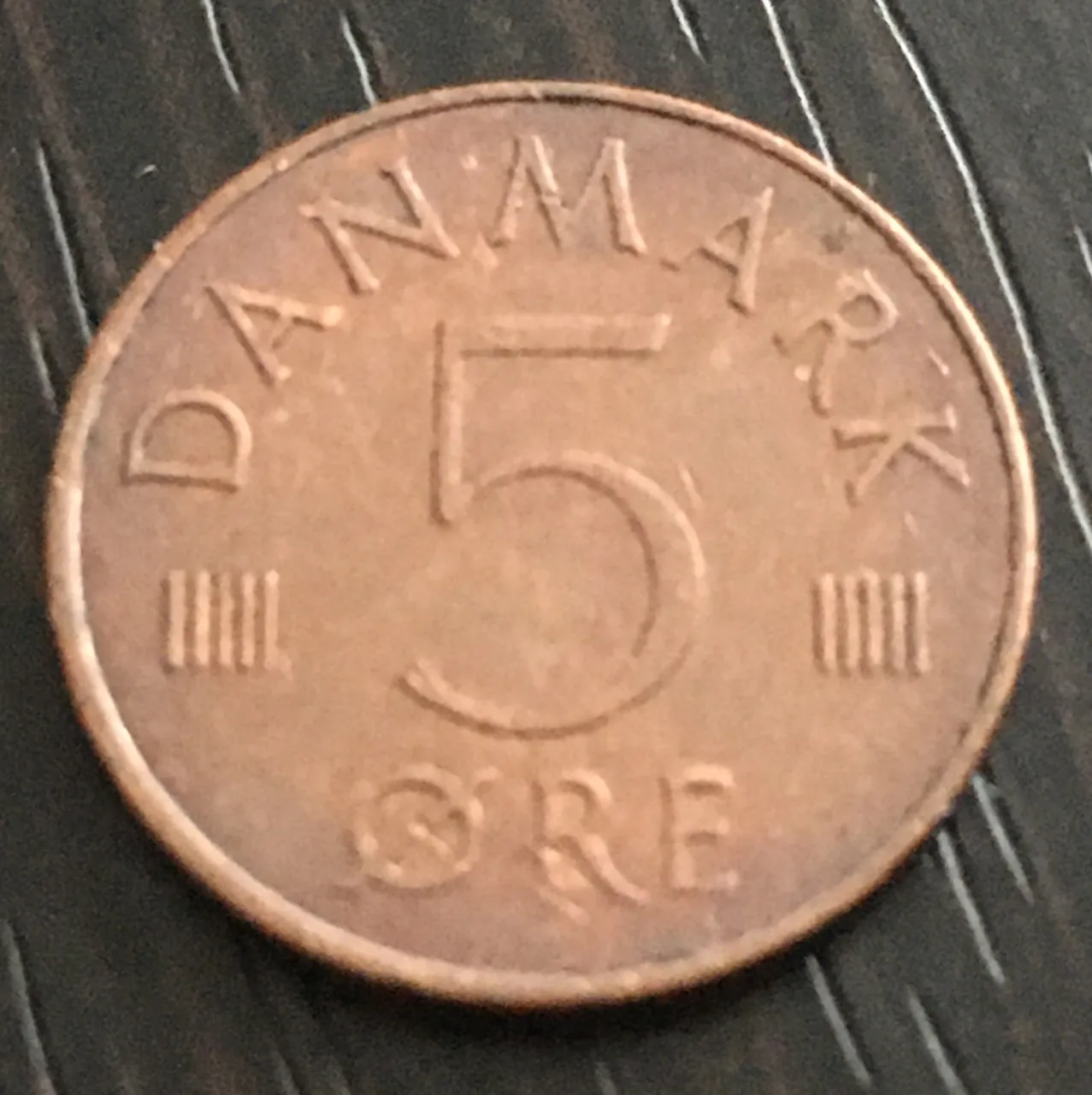
Привіт, шановні друзі! На огляді монета регулярного карбування — 5 ере 1981 року (Данія). Виготовлена вона з заліза, а гарний блиск придає покриття з міді. Діаметр складає 15. мм, а вага — 1.6 г. Монета вже виведена з обігу. Навіть монети номіналом 25 ере вже не використовуються з 2008 року.
Монети в Данії виготовляються ще з 10 століття. Протягом тривалого часу основою грошових одиниць був срібний стандарт. Та це не захищало населення від знецінення національної валюти. Кількість срібла в монетах з плином часу зменшувалося, гроші знецінювалися, в той час, як правителі на цьому багатіли.
Нова історія національної валюти Данії починається зі створення Національного банку 1 серпня 1918 року. Однією з найголовніших причин стала недовіра до фінансової системи, адже відбулося значне зростання цін. Знецінювання грошей в той час було обумовлено війною Наполеона, якого підтримував король Данії. Сучасна данська крона була запроваджена в 1875 році (деякі джерела вказують 1873) і використовується дотепер.
Реверс монети 5 ере. Монета з гладким гуртом виконана в класичному вигляді. В центральній частині відображається номінал. У верхній частині нанесено напис Данія.

З іншого боку викарбувана скорочена позначка перших літер королівської особи (монограма). У верхній частині зображена королівська корона, нижче якої по обидва боки нанесено по дві цифри (роки карбування — 19 та 81). Монета викарбувана під час правління королеви Маргрете 2.
Гарного дня!
5 ere, Denmark: coin of regular mintage. Coins of the world
Hello, dear friends! On inspection is a coin of regular mintage - 5 ere of 1981 (Denmark). It is made of iron, and a beautiful shine is given by a copper coating. The diameter is 15 mm, and the weight is 1.6 g. The coin has already been taken out of circulation. Even the 25 ere coins have not been used since 2008.
Coins have been produced in Denmark since the 10th century. For a long time, the basis of monetary units was the silver standard. But this did not protect the population from the devaluation of the national currency. The amount of silver in the coins decreased over time, money depreciated, while the rulers grew richer.
The new history of Denmark's national currency begins with the creation of the National Bank on August 1, 1918. One of the most important reasons was distrust in the financial system, because there was a significant increase in prices. The devaluation of money at that time was due to the war of Napoleon, who was supported by the king of Denmark. The modern Danish krone was introduced in 1875 (some sources indicate 1873) and is still in use today.
The reverse of the 5 ere coin. A coin with a smooth band is made in a classical way. The denomination is displayed in the central part. In the upper part, the inscription Denmark is applied.
On the other side, an abbreviated mark of the first letters of the royal person (monogram) is engraved. In the upper part, a royal crown is depicted, below which two numbers are printed on both sides (years of coinage - 19 and 81). The coin was minted during the reign of Queen Margrethe II.
Good day!